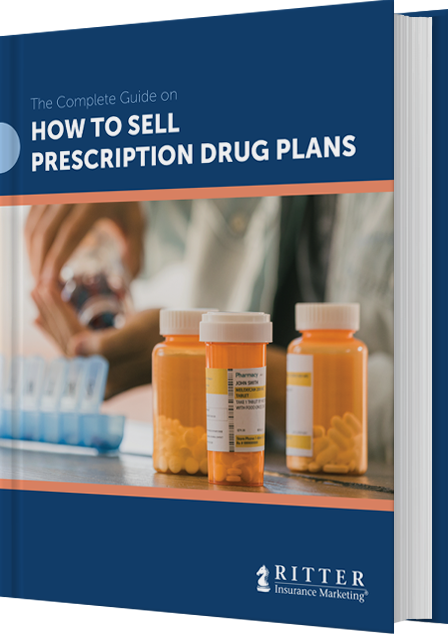Good news is on the horizon for your clients receiving Medicare Part D coverage! A new program is coming to help ease the burden of high out-of-pocket prescription drug costs.
Starting January 1, 2025, the Inflation Reduction Act’s Medicare Prescription Payment Plan, also known as M3P and the Part D smoothing provision, will allow beneficiaries to pay Medicare Part D out-of-pocket costs over the course of the year.
Listen to this article:
Become familiar with this program today, so your clients can benefit from it as soon as the 2025 Annual Enrollment Period (AEP)!
Legislature
All Medicare Part D prescription drug plans — except for Part D plans that exclusively charge $0 cost-sharing for coved Part D drugs — must offer beneficiaries the option to pay for their prescription drugs in capped monthly payments.
To briefly recap, in August 2022, President Biden signed the Inflation Reduction Act of 2022 into law. Part of this law provides financial relief for millions of Medicare beneficiaries by expanding benefits, lowering drug costs, keeping prescription drug premiums stable, and strengthening the Medicare program for the future. As a result of the legislation, starting in 2025, a new Medicare Prescription Payment Plan will require all Medicare Part D prescription drug plans, both stand-alone PDP and Medicare Advantage Prescription Drug (MAPD) plans, to offer beneficiaries the option to pay for their prescription drugs in capped monthly payments.
Medicare Prescription Payment Plan Timeline
According to this timeline, work towards implementing the Medicare Prescription Payment Plan started in July 2023. CMS issued the first part of draft guidance in August 2023, outlining procedures of the program including beneficiary payment calculations, program election requirements and interaction with other prescription drug programs like the Part D Low-Income Subsidy (LIS). On February 15, 2024, CMS released the second part of draft guidance for the Medicare Prescription Payment Plan. This correspondence outlined information on the program’s outreach and education requirements, pharmacy processes, and operational considerations for the implementation of the program’s first year.
Two weeks later, on February 29, 2024, CMS released the final part one guidance for the program. Most recently, on July 16, 2024, CMS released the final part two guidance, which includes information on education and outreach instruction.
How to Opt into the Program
Starting in October 2024, in conjunction with AEP, your clients enrolling in Medicare Part D coverage will be able to opt into the Medicare Prescription Payment Plan for the 2025 plan year. There will be tools available to use including easy-to-use monthly cost estimators, which will help your clients and their families decide whether or not to opt into the program.
Clients already enrolled in Part D coverage will have the opportunity to opt in prior to and throughout the plan year. Part D enrollees will be able to do so by contacting their Part D sponsor and completing the Medicare Prescription Payment Plan election process. Make sure you are familiar with this process, so you’ll be able to help your clients opt into the program. No matter if completed by paper, telephone, or online, Part D sponsors must consider all program election requests.
Under the final part two guidance, Part D sponsors must send the program election request forms either via the membership ID card mailing or in a separate mailing sent out during the same time frame, creating an easy opt-in opportunity for your clients.
Please note, Part D sponsors must process election requests within 10 calendar days prior to the plan year and within 24 hours during the plan year.
Key Details
It’s important that your clients understand this program does not reduce the out-of-pocket cost amount they will pay for their prescription drugs. Rather, it will make paying the amount more manageable by spreading the cost throughout the plan year.
How the Medicare Prescription Payment Plan Will Work
Beneficiaries who opt into M3P will not pay upfront and in-full at the pharmacy for their covered Part D prescription drug(s) at the time of a prescription pickup. Instead, their Part D plan sponsor will bill them monthly for any cost-sharing amount incurred. Part one guidance for the program outlined the requirements of Part D plan sponsors to promptly reimburse pharmacies the cost-sharing amount that normally would have been paid by a beneficiary.
If there is ever a time a beneficiary would like to opt out of the program, Part D sponsors cannot require them to pay a lump-sum repayment of any cost-sharing incurred. The sponsor must continue to send monthly bills until the balance is paid. However, it will be possible for a beneficiary to pay off their remaining cost-sharing balance in one lump sum should they choose to do so. After opting out of the program, moving forward, the individual will pay any new out-of-pocket costs directly to the pharmacy.
This program does not reduce out-of-pocket prescription drugs costs but makes the payment more manageable by spreading it out over the plan year.
It is also important to note that pharmacies cannot opt out of the M3P program unless they opt of out of accepting Part D plans.
Who Qualifies for the Medicare Prescription Payment Plan
This program is available to anyone with Medicare Part D, including those in the Extra Help program. Enrollees with high cost-sharing earlier in the plan year (such as those paying for brands and non-preferred drugs versus generic) will likely benefit the most from the program. Additionally, the Part D smoothing provision is most beneficial for beneficiaries who might hit the OOP cap early in the year. If someone who takes lower-cost prescriptions opts in, it may make their costs throughout the year more unpredictable and unmanageable due to the cost of refills compounding the monthly payments.
Before the Medicare Prescription Payment Plan goes into effect, Part D plan sponsors will be required to review their current Part D enrollees’ prescription drug costs from the current year and reach out to those who reached the maximum out-of-pocket cap between January 1 and September 30, 2024. During the plan year, Part D plan sponsors must also perform targeted outreach to enrollees they identify as likely to benefit from the program.
Additionally, Part D sponsors will also be responsible for notifying pharmacies at the point of sale if a Part D enrollee meets a $600 out-of-pocket threshold based on a single prescription. Upon receiving this notification, pharmacies should then provide information on the program to the beneficiary.
Under the program’s final part two guidance, Part D sponsors are no longer required to base their identifying criteria on prior authorization processes specifically, rather they can develop their own procedure.
Education on the Medicare Prescription Payment Plan
According to the latest guidance, Part D plan sponsors are required to include information about the program in current Part D communications materials, including their websites, member ID cards or separate mailings, and notices to enrollees (e.g., Evidence of Coverage, Annual Notice of Change, and Explanation of Benefits documents). They also must include information on their websites regarding the low-income subsidy program, including information on the recent expansion of eligibility and how to enroll in the program. This should enhance awareness of the program to your clients.
Part D plan sponsors are required to include information about the Medicare Prescription Payment Plan in current Part D communications materials.
Additionally, CMS will release resources that cover the M3P before AEP. Updates will also be made to the Medicare & You Handbook and partners will be able to access resources and materials on Medicare.gov, including a cost preview feature in the Medicare Plan Finder and a fact sheet.
We recommend that you become familiar with the FAQs found on the CMS’ Fact Sheets for final guidance one and two. Doing so will help you better understand the program and equip you to field a range of questions with ease during plan reviews and AEP enrollment meetings.
The Part D smoothing provision is an exciting budgeting opportunity for Medicare beneficiaries that will hopefully relieve some stress from financial insecurity many are facing. If you want to stay up to date on the more of the latest insurance info, complete a quick registration with Ritter to gain our sales support and first-rate resources!
Interested in learning more about selling Part D prescription drug plans? Download our guide!

Editor’s Note: This post was originally published in March 2024. It has been updated to include information more relevant to the 2025 Annual Enrollment Period.







Not affiliated with or endorsed by Medicare or any government agency.
Share Post